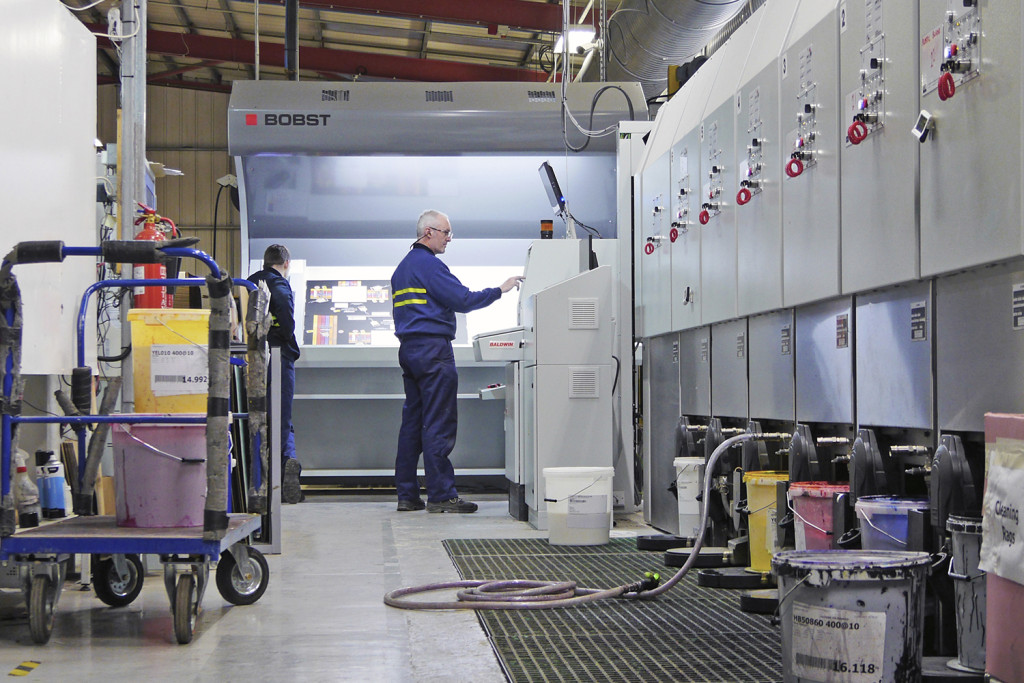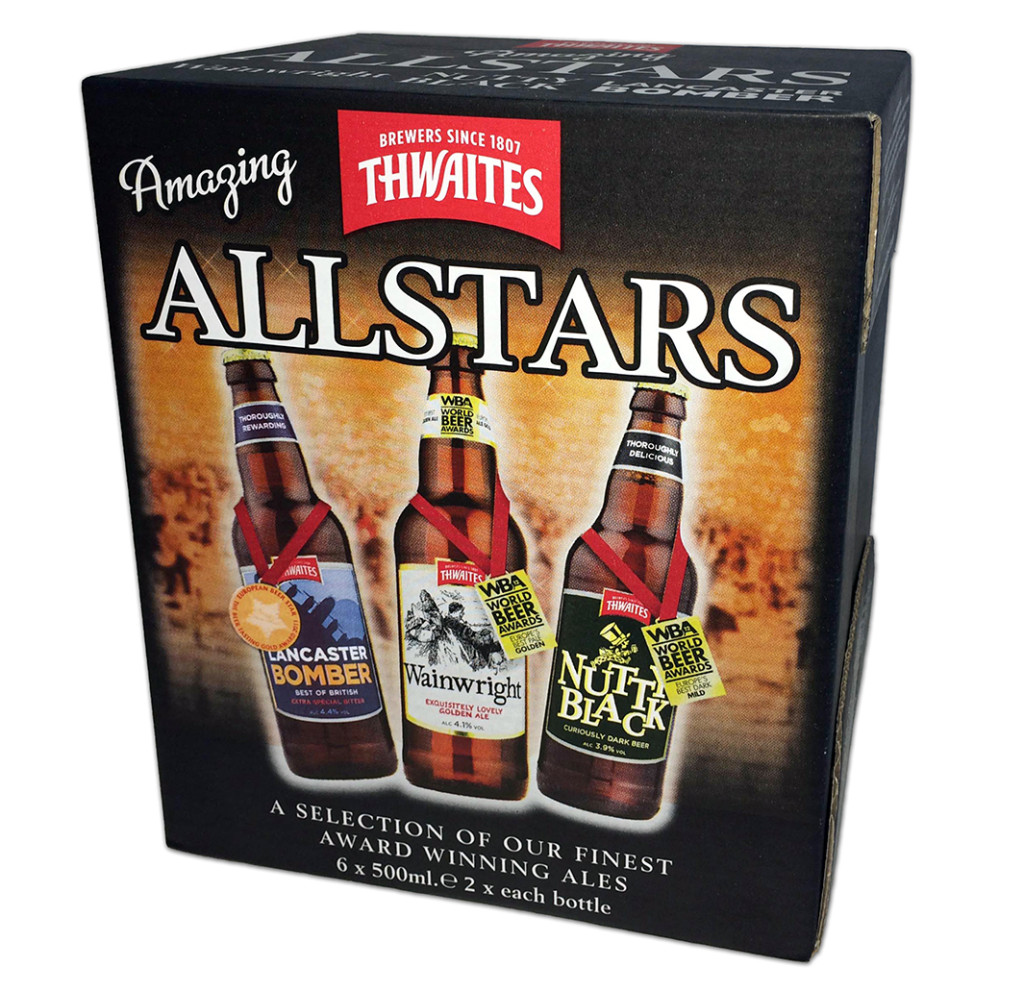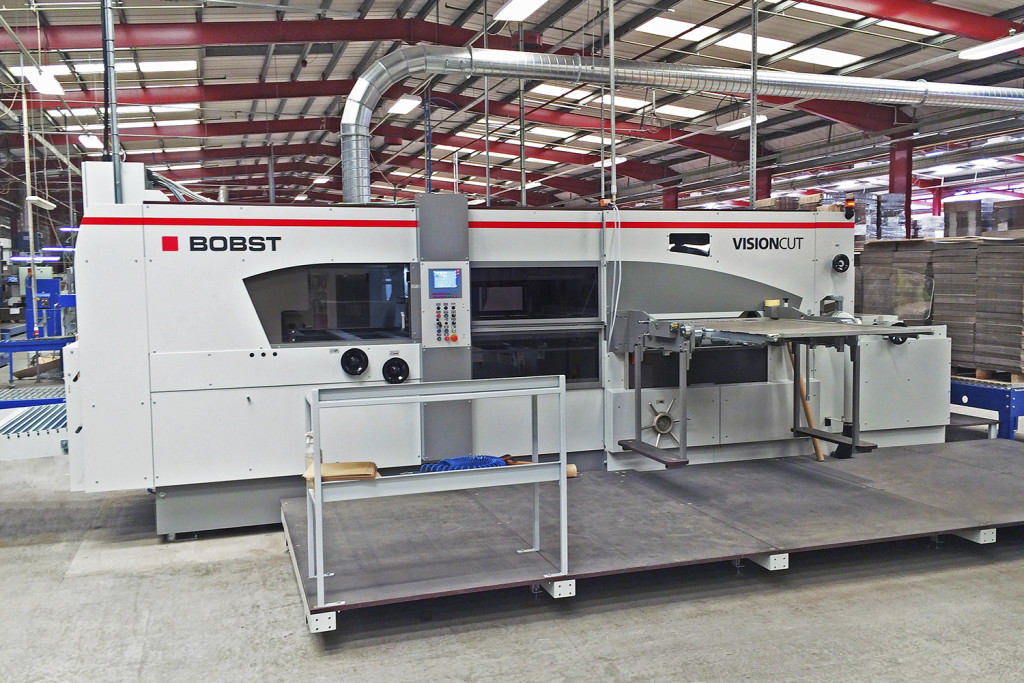

Tag: news
In August 2017 we purchased a new high quality 6 colour print press
The acquisition of the Bobst 1624 NT means we can compete at the highest level of flexo printing on to boxes.
The six colour press allows anilox rollers to be interchanged within minutes to maximise print quality on different substrates.
The high graphics ability of this machine allows the production of shelf ready packaging and POS displays printed onto coated liners with a gloss finish.
Lazerian and The Cardboard Box Company 2017
CBC worked alongside the artist Liam Hopkins from Lazerian at the first ever National Festival of Making in Blackburn in 2017. This resulted in an amazing and incredible piece of cardboard artwork which was recognised internationally, appearing on the front cover and centre pages of the New York INTERIOR DESIGN Magazine.
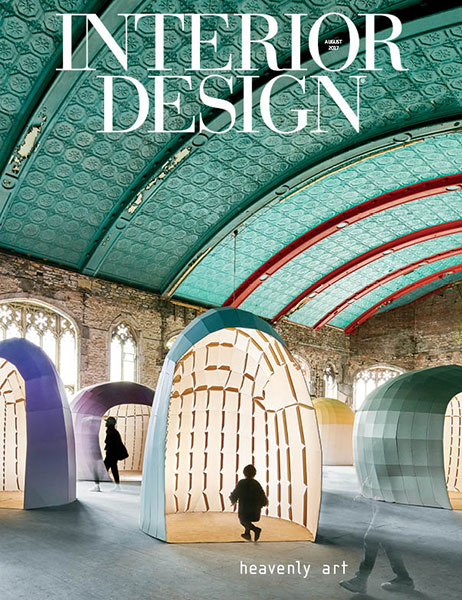
During his residency Lazerian’s founder, Liam Hopkins, discovered that the workforce of the Cardboard Box Company depended entirely upon each other – yet they worked largely alone, in distinct sectors. His vibrant and exotic cardboard structures evoke this modern predicament of individual detachment, whilst suggesting the colleagues’ essential connectivity. The pods’ use of irregular and organic forms presents a further challenge to perceptions by skewing the expected, strictly angular form of the cardboard box. And this is not to mention Chromatogram’s exuberant colour schemes – a direct result of Hopkins’ research into the company archives of colour palettes. Each tone in the range has been used by the manufacturer at some stage in its production history and their realisation in the work represents a record of the company’s stunning gradient of colour through time.
Art In Manufacturing 2017
A co-commission between the National Festival of Making and Super Slow Way, Art in Manufacturing was a groundbreaking set of commissions that paired 10 exceptional artists with Pennine Lancashire’s leading manufacturers. The incredible outcomes of their residencies were shown in Blackburn town centre’s most historic and contemporary venues as part of the 2017 National Festival of Making, produced and directed by Wash Design with supported by Creative Lancashire.
In April 2017 we purchased a second folder-gluer machine.
The Bobst EXPERTFOLD 165 is an extremely versatile folder-gluer which allows us to produce an impressive number of box styles in a wide range of materials at speeds of up to 450 meters per minute.
With complete control during the folding process, advanced feeding, accurate prebreaking and a folding process that minimises fishtailing and gap ensure high productivity and a quality finished product.
With its straight line, crash-lock, 4 & 6-corner capabilities and quick setting times, our EXPERTFOLD also provides the versatility and flexibility needed to meet whatever request you might have.
GOLD Post Print on Folder Gluers Uncoated
The artwork was supplied by a Design Agency as a 4 colour process suitable for litho print.
The challenge was to duplicate the litho artwork and convert this to be printed flexo.
All text, logos and the backgound image had to be Repro’d to the machine tolerances, this included Photoshop flexo re-touching of the photographic images including removing unnecessary colour from specific channels, grey component replacement, and minimum dot allowance.
The box was printed 4 colour and die-cut on our Bobst 618 casemaker rotary die cutter at 85 Lpi onto uncoated board in one pass.
GOLD Best Creative Use Of The Flexo Process
SILVER Post Print on Folder Gluers Uncoated
GOLD Best Creative Use Of The Flexo Process
We created a light box from corrugated board showing illuminated Halloween images by using fluorescent inks and LED lights.
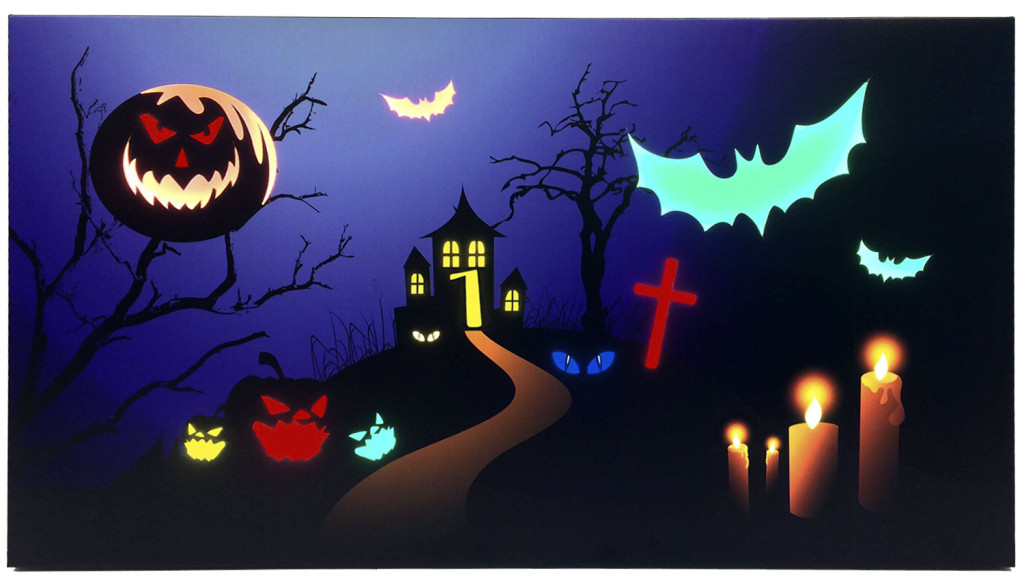
The Halloween images were digitally printed onto corrugated board and made into a light box frame. Using our Bobst 618 press, we printed a number of boards in various colours using Fluorescent inks which would illuminate when LED light is used.
The Halloween images on the digitally printed frame were cut using our Zund G3 CAD cutting table. We cut the images from the various fluorescent boards and placed them behind the cut out areas on the frame. LED lights were placed around each image inside the frame to create the completed light box.
SILVER Post Print on Folder Gluers Uncoated
We were asked to create artwork for an SRP trying to match the same graphics as the product packaging which was printed Litho.

This type of work would normally be produced on larger complex printers which can achieve tight tolerances for registration .
We managed to create the artwork using only three colours, and had to use the minimum tolerances that were achievable on the machine and anilox specification.
The box was printed and die-cut on our Bobst 618 casemaker rotary die cutter at 75 Lpi onto uncoated board in one pass.
In January 2016 we purchased another die-cutting machine.
Following the success of our recently purchased Bobst VISIONCUT die-cutter back in April 2015, we continue to invest and have now purchased another identical VISIONCUT machine.
This second machine has replaced our existing Bobst 160 die-cutter so we are now able to run two identical die-cutting machines with greater efficiency and throughput capacity.
We offer high quality flat bed die-cutting for nano/micro flute to double wall corrugated board and litho-laminated material.
With demand for die-cut corrugated products at an all time high right across the globe, having access to quality flat bed die-cutting has never been more important. Our VISIONCUT machines give us exactly that.
VISIONCUT machines deliver maximum machine uptime, while their clever workflow design minimises unproductive time and deliver job change-overs in less than 10 minutes.
- Our CAD department examine existing packaging to find weak spots and identify potential causes.
- Our in-house paper laboratory carries out a series of tests to find out what the existing material specification is and if incumbent supplier is supplying agreed specification.
- Once the results of paper tests are known, our CAD team decide whether existing designs with a material specification increase is fit for purpose or if a completely fresh approach is required. This decision is made by taking into account all the steps involved in problem 3: reduce costs by design.
- The final solution or recommended solutions are then supplied for customer approval.
- We recommend that the solution is transit trialled to fully test the improvement in spec or design is successful along its natural journey.
- Our CAD department seek to understand the product in its entirety, utilising existing packing processes and timings, existing packaging in terms of construction and material which is examined in the in house paper laboratory, finished product distribution journey, end users expectations, standards and requirements and crucially manufacturing process within CBC for potential new designs.
- Our CAD team look at existing designs to see if any additional packaging components are used such as plastic trays or air bags, in order to try and offer a single corrugated solution and eliminate any expensive additions.
- To reduce overall transportation costs, our CAD team look at rationalising size or changing orientation of products within the package in order to optimise pallet fill of packed finished product.
- Our CAD team examine existing packaging lines to see if potential suggested changes do not reduce productivity rates, and if possible allow for increase in productivity.
- The final solution or recommended solutions are then supplied for customer approval.
- The CBC team consider the overall position associated with product criteria, including the manufacturing process, product journey and its final retail environment.
- Our in-house CAD department quickly recognise the most appropriate design options and produce samples in order to explain their reasoning and to allow customer to test the packaging.
- Our in-house Graphics department take chosen images, logos or ideas, whether they exist electronically, on a piece of paper, or just the customer’s vision, and use their brand expertise to establish the most effect method of print in order to fully maximise the visual effect of the SRP.
- Our Graphics department produce electronic proofs, 3D imagery and hard digital proofs for customers to see during product development.
- The required colours generated by the Graphics team are formulated within the in-house Ink Laboratory and then locked into the spectrophotometer colour matching system so the colour standards are set for all future runs.
- Printed corrugated packaging is then produced with the colours measured for accuracy throughout the manufactured batch to ensure the highest quality product possible, maximising the strength of visual appeal for the brand consistently throughout the product’s life.
In April 2015 we purchased a second die-cutting machine.
The Bobst VISIONCUT further enhances our productivity and offers high quality flat bed die-cutting for nano/micro flute to double wall corrugated board and litho-laminated material.
With demand for die-cut corrugated products at an all time high right across the globe, having access to quality flat bed die-cutting has never been more important. Our VISIONCUT gives us exactly that.
Our VISIONCUT delivers maximum machine uptime, while its clever workflow design minimises unproductive time and delivers job change-over in less than 10 minutes.
